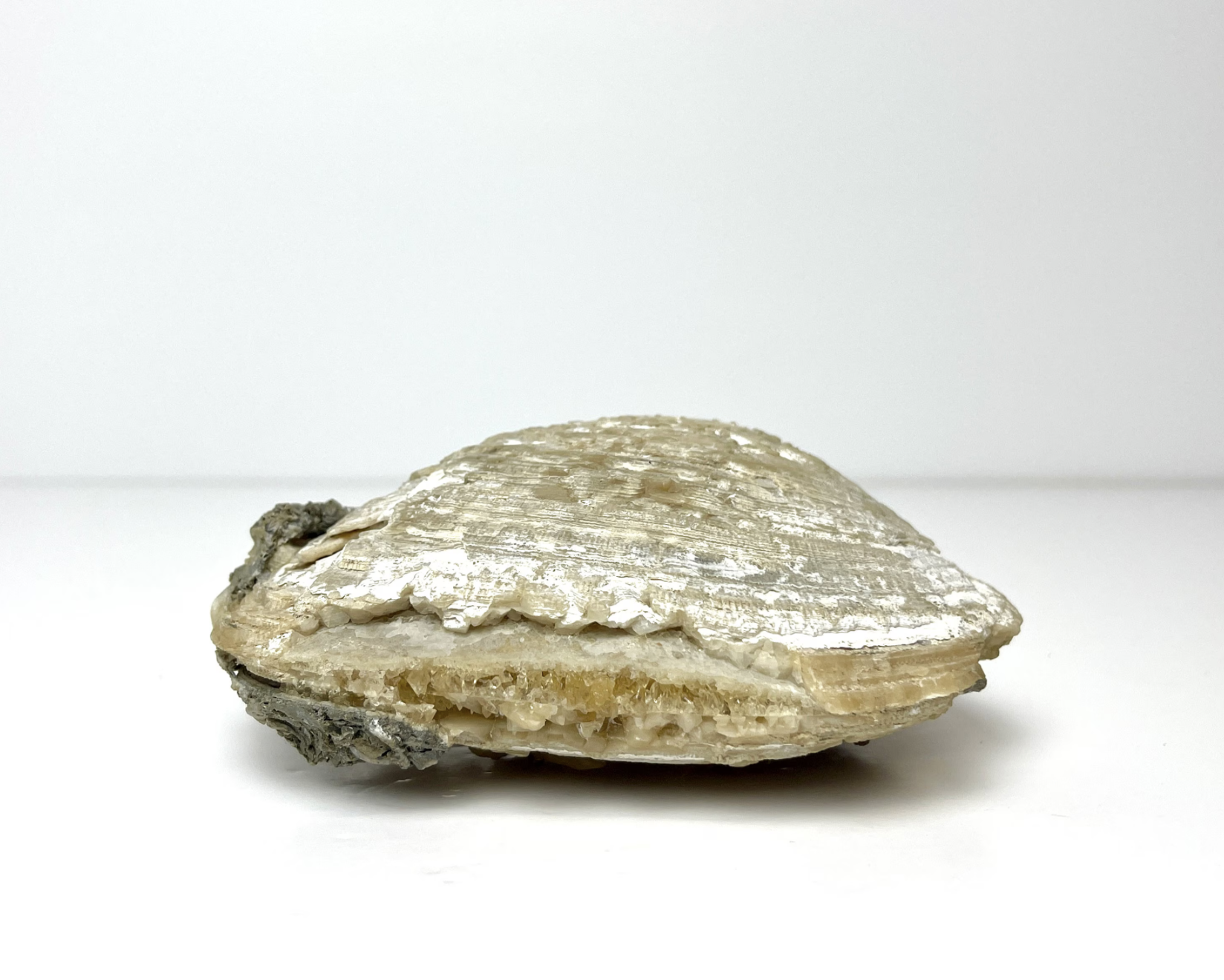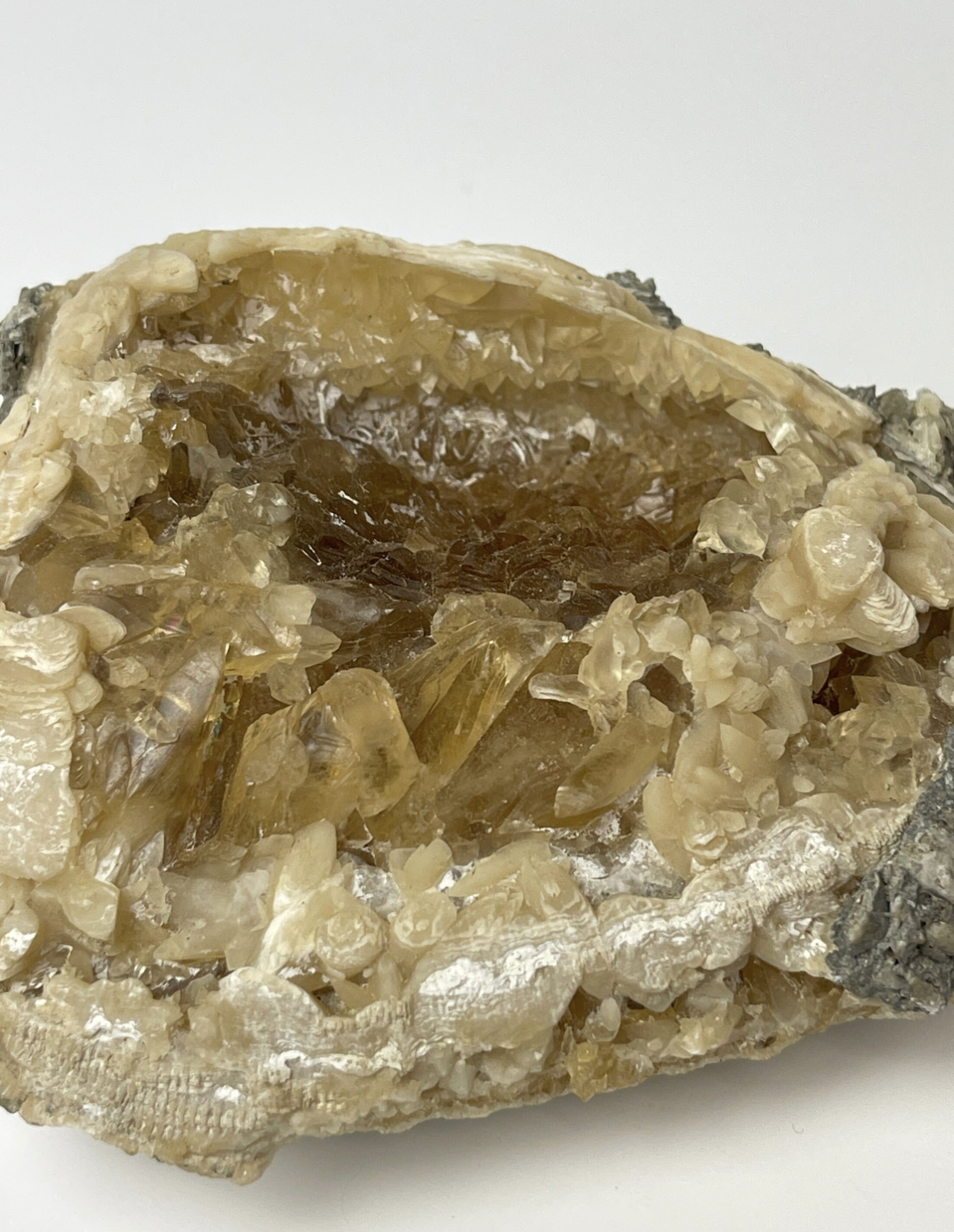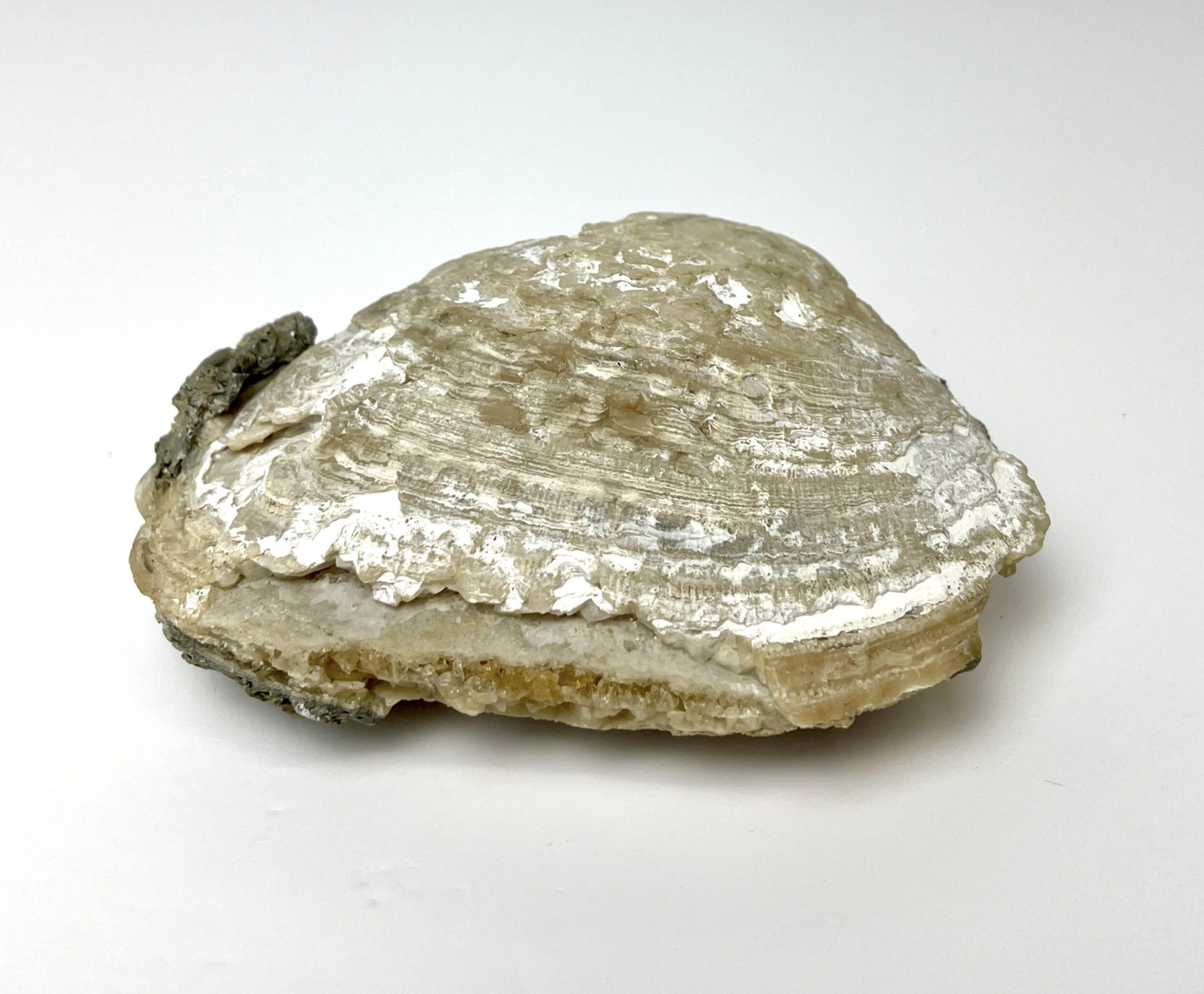



Mercenaria clams Crystallised Bivalve Fossil, Florida, USA, 1.8 Million years
Mercenaria clams Crystallised Bivalve Fossil, Florida, USA
During the Pleistocene Epoch, 78,000 to 1.8 million years ago, these animals thrived in the warm saltwater tropical seas that periodically transgressed Florida. A transgression is the inundation of a landmass with water, be it salt or fresh, that remains for an extended period.
Throughout history, sea levels would occasionally rise and fall. Sometimes this was because of the sea rising, and sometimes it was because of the land sinking through geological forces such as plate tectonics.
Regardless, the clams lived and died in this space because they were trapped beneath the waves and sand or tossed up onto the beach. Being a hard substance, the calcium carbonate shells would generally survive decay while the soft tissues decayed, creating a void. Over time, calcium-rich water would permeate the shells and deposit calcite within the void, creating beautiful amber-colored rhombohedral crystals.
These amber-colored crystals are sometimes called honey amber. The impurities determine the color of the crystals during formation.
Width 12 x Height 8.5
Mercenaria clams Crystallised Bivalve Fossil, Florida, USA, 1.8 Million years
Mercenaria clams Crystallised Bivalve Fossil, Florida, USA
During the Pleistocene Epoch, 78,000 to 1.8 million years ago, these animals thrived in the warm saltwater tropical seas that periodically transgressed Florida. A transgression is the inundation of a landmass with water, be it salt or fresh, that remains for an extended period.
Throughout history, sea levels would occasionally rise and fall. Sometimes this was because of the sea rising, and sometimes it was because of the land sinking through geological forces such as plate tectonics.
Regardless, the clams lived and died in this space because they were trapped beneath the waves and sand or tossed up onto the beach. Being a hard substance, the calcium carbonate shells would generally survive decay while the soft tissues decayed, creating a void. Over time, calcium-rich water would permeate the shells and deposit calcite within the void, creating beautiful amber-colored rhombohedral crystals.
These amber-colored crystals are sometimes called honey amber. The impurities determine the color of the crystals during formation.
Width 12 x Height 8.5